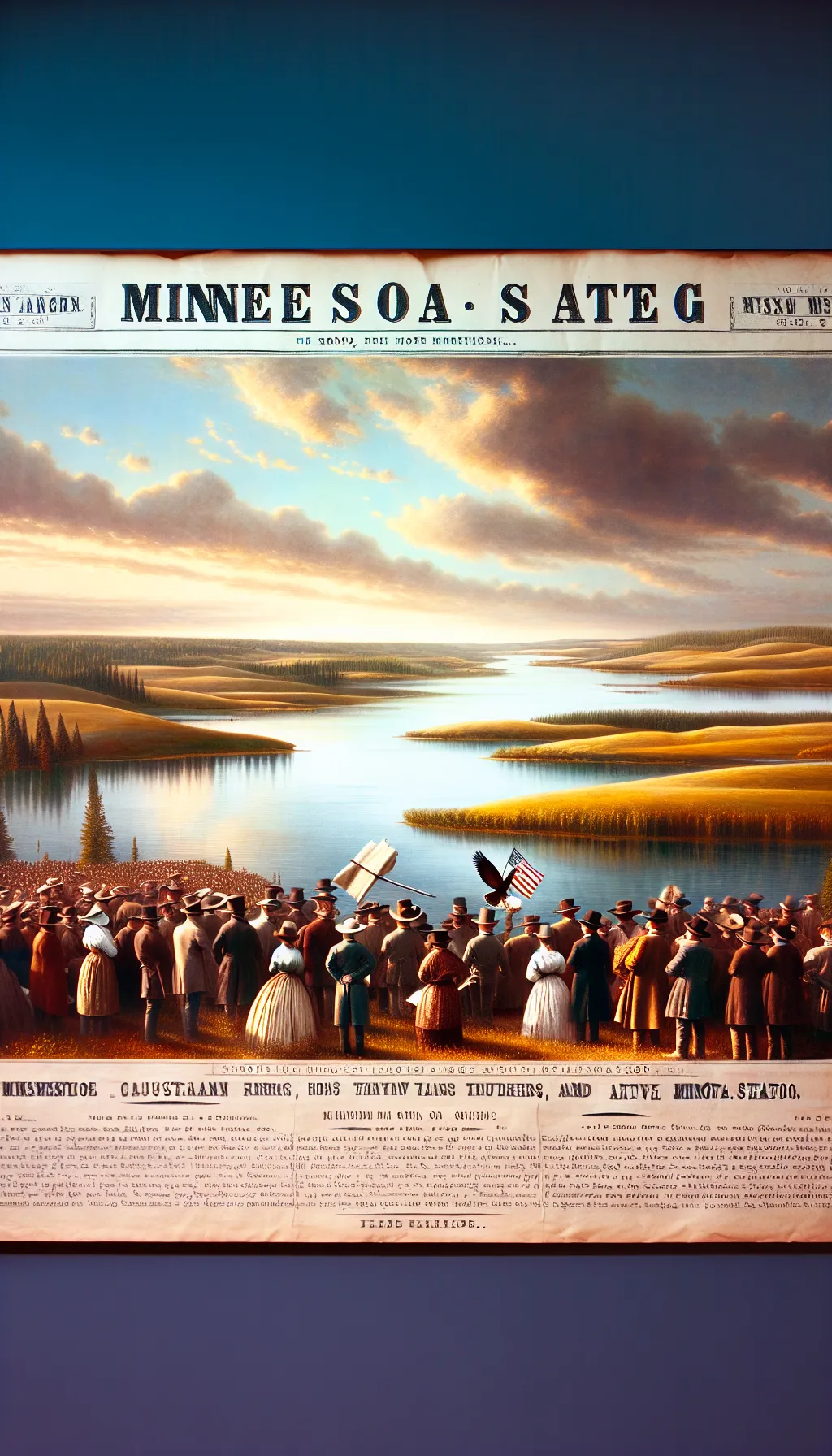United States – Minnesota's Path to Statehood – May 11, 1858
TLDR;
- Event: Minnesota became the 32nd state of the United States on May 11, 1858, after Congress approved its admission and President James Buchanan signed the bill.
- Context: The admission occurred during a period of national tension over slavery and westward expansion, with Minnesota joining as a free state.
- Challenges: The path to statehood involved political debates over governance and representation, reflecting the broader national conflicts of the time.
- Significance: Minnesota’s statehood marked a pivotal moment in American history, contributing to the Union during the pre-Civil War era and symbolizing the complexities of the nation’s expansion.
–
Story
The air was thick with anticipation on May 11, 1858, as the people of Minnesota awaited the news that would forever change their lives. The territory, known for its vast prairies and shimmering lakes, was on the brink of a transformation. The United States Congress had finally approved Minnesota’s admission as the 32nd state of the Union.

In the mid-19th century, the United States was a nation in flux, expanding its borders and grappling with the growing pains of a young democracy amidst rising sectional tensions over slavery. Minnesota, with its rich natural resources, was part of this contentious expansion. Settlers had flocked to the region, drawn by the promise of fertile land, though it remained a sparsely populated frontier.
The journey to statehood was not without its challenges. Political debates raged over issues of governance and representation, as the people of Minnesota sought to carve out their place in the Union. The admission of free states like Minnesota was a point of contention in the national debate over slavery and westward expansion. Yet, on that day in May, the procedural step was completed as President James Buchanan signed the bill that officially welcomed Minnesota into the fold.
This moment was a bureaucratic milestone in a nation on the edge of civil war, reflecting the complex dynamics of American expansion. As the 32nd star was added to the flag, the people of Minnesota marked their new identity, ready to contribute to the United States during a time of profound national division.
Minnesota’s statehood was a step in the ongoing story of the American experiment, set against the backdrop of a country deeply divided over the future of slavery and the meaning of democracy.
–
| Would a different path to statehood have changed Minnesota’s role in American history? |